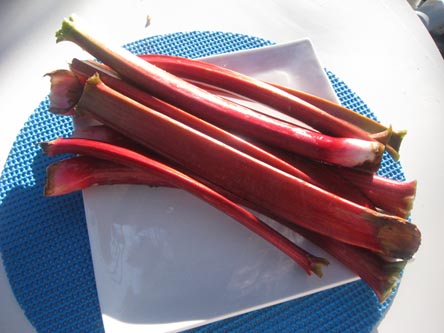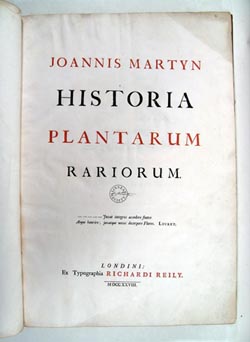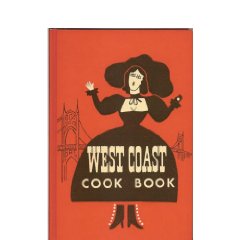Where does the Word come From?
Most experts conclude that the Rhubarb comes from
a French word rubarbe that came from the Medieval Latin word Rheubarbarum, or from the Greek, Rha barbaron. Rha was a name the Scythians who lived almost 3000 years ago around the Ukraine used for what is now the Volga River. Rhubarb grew wild on the banks of the Volga because it loves
cold damp climates.
|
The Volga River
|
Barbarum is a term for foreign, and to the Greeks and Romans it was foreign folks around this river that grew the strange plant. So when you put the two words together you get something like Rhubarb.
____________________________________
|
Where did it Originate ? We can trace back to China, in the cold climates of Mongolia, and the Himalayas' and Siberia. The roots of this plant survive the frozen grounds. Records show that the root was used for medicinal purposes. Pen Khing's Herbal listed it and that was in 2700 B.C. This is disputed though as it is hard to verify documents that old. It is clear that several centuries before Christ Asia was exporting Rhubarb root. |
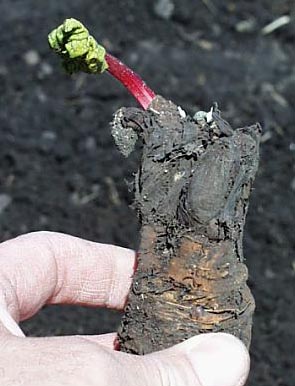
It is well documented that it was used for medicinal purpose in Asia by the age of Han, 206, BC |
____________________________________
For Centuries Rhubarb was used only as a Medicine
|

Dioscorides, famous Roman physician around the time of Nero, |
It was being imported in Greece and Rome for medicinal purposes in the 1st. century,
Dioscorides wrote that this Rheubarbarum had good medicinal properties and the plant grew beyond the river Bosporus
( a river in Turkey)
by the 10th century this root became a major export of Asia.
Rhubarb was taken for many illnesses, in particular it was good to cure constipation for inflamation. |
_________________________________________________
Only Recently Rhubarb was Eaten as a Food |
Rhubarb was used only as a medicine for centuries. Like potatoes and tomatoes the leaves are poisonous so it was probably not chanced that the stems could be eaten as food. A document 1686 Historia Plantarum compares Rhubarb to a similar looking Sorrel that is used for food.
Red Veined Sorrel |
|
____________________________________
The first recorded recipe that has been found according to Alan Davidson (Oxford Companion to Food) appears to be in this 1806-7 cookbook by
Maria Eliza Rundell, for Rhubarb Tart.
|
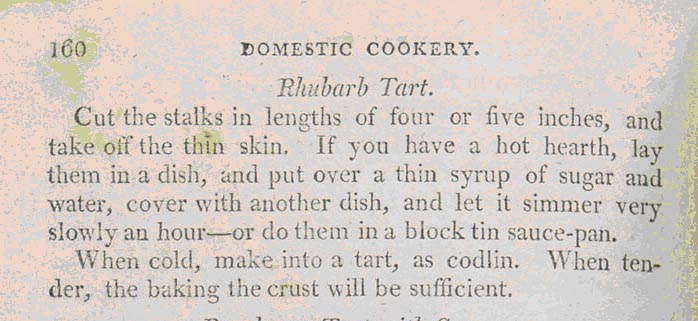
Page 160 of
A New System of Domestic Cookery by Maria Eliza Rundell, 1807
The tart would look something like this
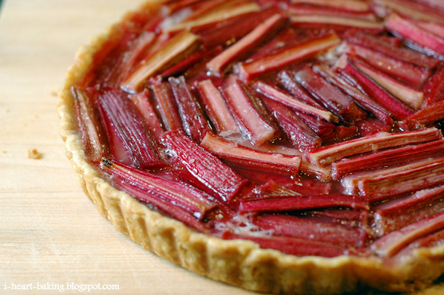
I heart baking
_____________________________________
Rhubarb Varieties
|
Rhubarb has many varieties and can be yellow or green and varies in size, and Oxalic acid which is the wonderful tartness we get from it. One variety worth noting is the Irish Giant, which the stems are 5 feet (1.5 meters long and as thick as a man's arm. |
|
_______________________________________
|
| |
What is Champagne Rhubarb ?...A crop harvested in winter?
This is a curious tradition, rhubarb plants are taken from the field during winter months and placed in a dark shed where no sunlight gets in. The
heat tricks the plant into thinking it is time to grow. The stalks feed off of the nutrients in the root. In a few weeks stalks appear and they are harvested carefully by dim candles. They say it is so quiet in these sheds that you can hear the "pop" of a bud open from the stem. Champagne Rhubarb is sometimes 3 times as expensive as garden variety and is prized for it's tenderness and sweetness.
|
____________________________________
Does it have any Health Benefits? Rhubarb is now classified as a superfood for its ratio of health benefits to calories – only 7 calories per 100 grams. Savvy slimmers have also realized it actually speeds up the metabolism. High levels of calcium mean it is a fat-free alternative to dairy products which lowers cholesterol. |
____________________________________
Cooking with Rhubarb
Rhubarb is used mostly in desserts like pies, cobblers, or mixed with custards. It makes a nice sauce that you would use like an applesauce. Rhubarb is often paired with strawberries in these desserts.
Rhubarb is also used as an interesting flavor in soups and stews.
It is also cooked with spinach or other greens for a side dish.
Recipes for Rhubarb
More Recipes for Rhubarb |
Rhubarb Pie |
Strawberry Rhubarb Pie |
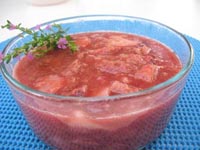
Rhubarb Sauce
|
|
|
|

